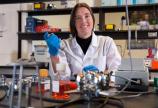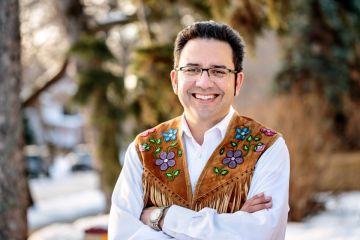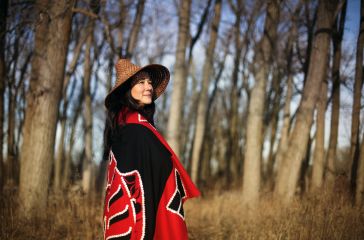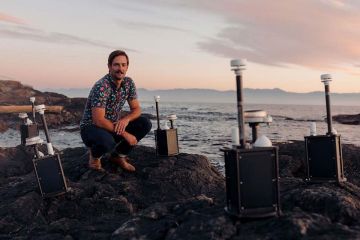Building better treatments
Medical Sciences, Science, Engineering
- Mark Witten
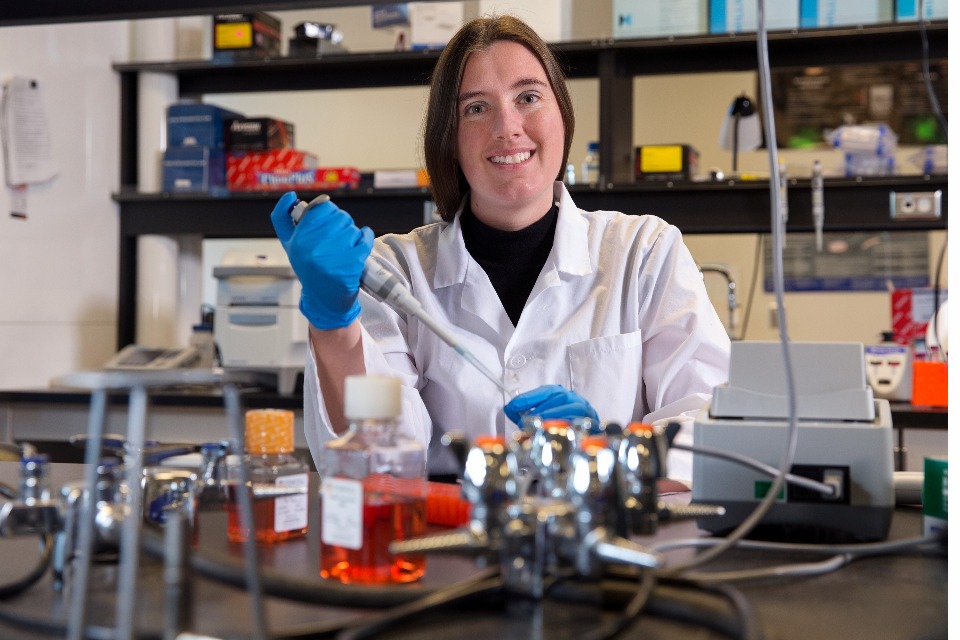
When Stephanie Willerth was enrolled in a high school International Baccalaureate program in her native Missouri in 1996, British embryologist Ian Wilmut successfully cloned a sheep named Dolly. “I was fascinated by it all. I read the original scientific papers on the Dolly project and wrote an extended essay on the possibilities of cloning and stem cells and their potential to generate replacement tissues,” says Willerth, a professor in Mechanical Engineering, Division of Medical Sciences, and Canada Research Chair in Biomedical Engineering at the University of Victoria.
Today, Willerth is making those incredible possibilities real in the fields of tissue engineering and regenerative medicine, which could lead to new and better treatments for conditions such as spinal-cord injury, Alzheimer’s disease, Parkinson’s disease, and brain cancer. She’s developed cool tools like specialized bioinks for use with 3D bioprinting, biomaterial scaffolds and biodegradable microspheres to produce engineered neural cells and tissues from stem cells for two main purposes: replacing diseased or damaged regions of the nervous system and as novel models to screen for promising new drug treatments.
Willerth uses her cutting-edge toolkit to make personalized neural tissues from stem cells more rapidly than with other tissue-engineering methods and to improve their viability, so cells and tissues implanted in the human brain or spinal cord are more likely to survive and thrive. For example, in a research collaboration with Vancouver-based Aspect Biosystems, Willerth combined her specially formulated fibrin-based bioink— recently submitted for a patent—with Aspect’s proprietary bioprinting technology to produce neural cells and tissues that resemble spinal-cord motor neurons and tissues to help develop potential cell therapies for treating spinal cord injury.
“Our bioink supports neural stem cell growth and the capacity to differentiate into specific cells, such as motor neurons. Although neural stem cells don’t like other bioprinting processes, they do like the combination of our bioink and Aspect’s bioprinting process and we get very good cell viability,” explains Willerth, a graduate of the Massachusetts Institute of Technology (MIT) and Washington University.
She has also developed 3D biomaterial scaffolds to deliver drugs and control their release to help repair and regenerate damaged spinal-cord tissue and to support the transplanting of motor neurons (reprogrammed from stem cells) in the spinal cord so they can survive and grow. Another promising regeneration project involves converting scar-forming cells called astrocytes that proliferate after a spinal-cord injury into healthy nerve cells. “We would inject a specific protein into astrocytes after spinal-cord injury to help reprogram and convert them into neurons,” she explains.
Willerth’s bioprinted neural tissues, similar to spinal cord tissue, can also serve as a powerful new tool for screening drugs to treat spinal-cord injury.
Pharmaceutical companies are very interested because our neural-tissue models will allow them to do preclinical screening and testing of drug compounds on more humanized tissues, and this more accurately represents the in vivo response to treatment.
—Biomedical engineer Stephanie Willerth
Willerth is collaborating with University of British Columbia neurologist Dr. Haakon Nygaard to reprogram skin cells from patients with different subtypes of Alzheimer’s disease into neural tissues for drug screening to help identify more effective drug treatments. “By reprogramming stem-cell lines containing different genetic mutations associated with Alzheimer’s disease, we can use personalized medicine to screen for drug targets to treat different subsets of the disease,” she says.
Willerth’s lab is also harnessing the tools of regenerative medicine to investigate new approaches to treating glioblastoma, an aggressive form of brain cancer known in Canada for claiming the life of musician Gord Downie. In a study with UVic undergraduate student and Provost Award winner Christopher Lee, Willerth used a cocktail of small molecules to reprogram glioblastoma cells into nonproliferating, healthy neurons, an approach that could potentially be used to inhibit the spread of glioblastoma cells. Willerth and Lee also created a novel 3D printed glioblastoma tumour model using a fibrin-based bioink for drug screening. “The advantage of testing in a 3D glioblastoma tumour model is that it’s closer to a tumour in the human body, which gives you better idea of a drug’s effectiveness and toxicity,” she says.
Photos
In this story
People: Stephanie Willerth
Publication: The Torch

